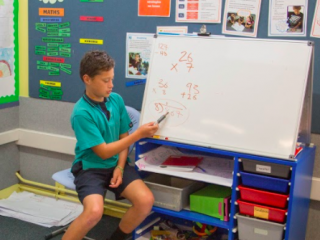When students become reflective about the teaching and learning process, they are strengthening their own capacity to learn. Central to this is the principal of reflection as metacognition, where students are aware of and can describe their thinking in a way that allows them to "close the gap" between what they know and what they need to learn.
Professional development resources
Download these slide presentations for further professional development. The first presentation identifies strategies to implement and maintain reflective practices in the classroom. The second presentation identifies strategies to further clarify the next steps in learning.
 Reflection
(PowerPoint 2 MB)
Reflection
(PowerPoint 2 MB)
 Next steps in learning
(PowerPoint 2 MB)
Next steps in learning
(PowerPoint 2 MB)
References and readings
Absolum, M. (2006). Clarity in the classroom. Auckland: Hodder Education. pp.142–163 and pp. 165-173.
Clarke, S. (2001). Unlocking formative assessment: Practical strategies for enhancing pupils’ learning in the primary classroom. London: Hodder and Stoughton. pp. 39–49.
Claxton, G. (2008). What’s the point of school? Re-discovering the heart of education. Oxford: Oneworld Publications.
Claxton, G. (2006). Expanding the Capacity to Learn: A new end for Education? Conference Warwick University, September 6, 2006.
Stoll, L., Fink, D., & Earl, L. RoutledgeFalmer (2002). It’s About Learning (and it’s about time), Chapter 2, entitled "Learning about learning".
<< Classroom resources


